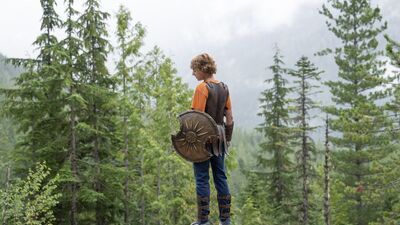From there, viewers should expect a show that adheres to the tween television form. For example, “Percy Jackson and the Olympians” modulates between warm, network-style lighting (everyone looks great!) to overly dark action sequences (can you follow what’s happening without turning up the brightness on your screen?). It’s not inspiring stuff but the aesthetic gets more enjoyable with the arrival of mythological creatures: a subtle set of horns here, a magic baseball cap there. We’re not talking Guillermo del Toro-level monsters but pretty and fun creatures, worth every penny Disney spent on them.

With today’s television conventions intact, “Percy Jackson and the Olympians” has the chance to play with the set of Greek myths so many of us learn in school. Percy is named after Perseus (get it?) and how exactly P. Jackson can exist in a world where the original Perseus’ great deeds are immortalized in museums while also re-living them, does not make much sense. For example, did the original Perseus slay Medusa or not? If so, how is she alive to meet our Percy and his friends again? It’s better not to worry about it.
So while “Percy Jackson and the Olympians” doesn’t have much to add in terms of critically examining the mythology it draws from (unlike, say Madeline Miller’s fabulous novels Circe and The Song of Achilles), there’s still plenty of joy in revisiting these stories. For example, the casting of Jason Mantzoukas as Dionysus is the stuff of the Gods. Even if Mantzoukas is not given much to do in the first four episodes made available to critics, the possibility for his debauchery is there. Plus, looking for your favorite monsters, gods, creatures, and references is quite entertaining. Anticipating how the show will portray them and set them in the modern era is half the joy of watching this one as a grown up.

